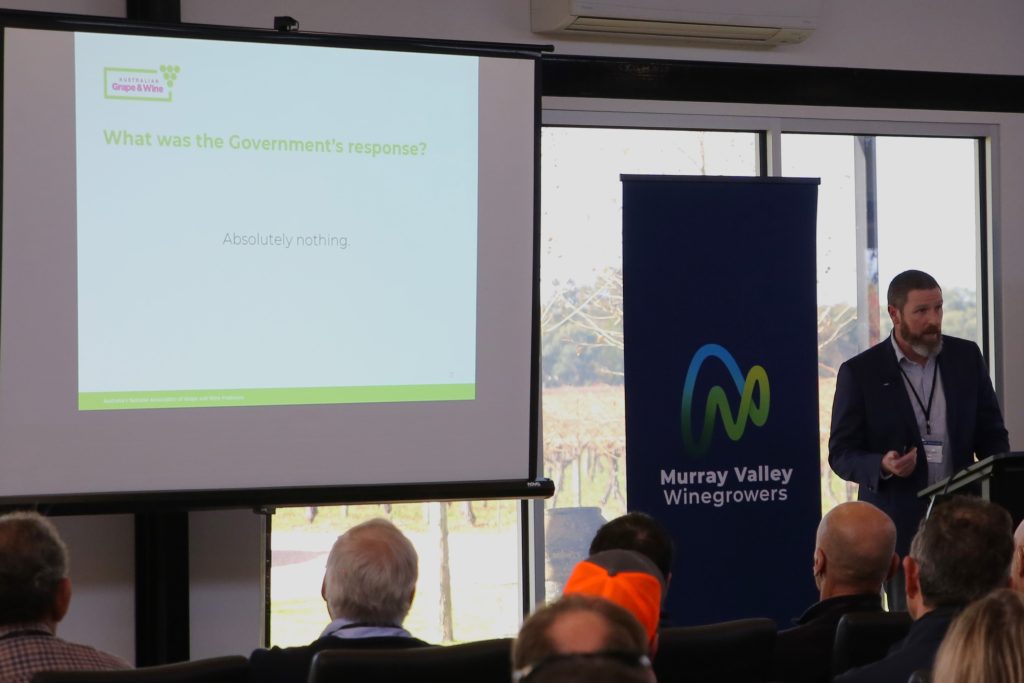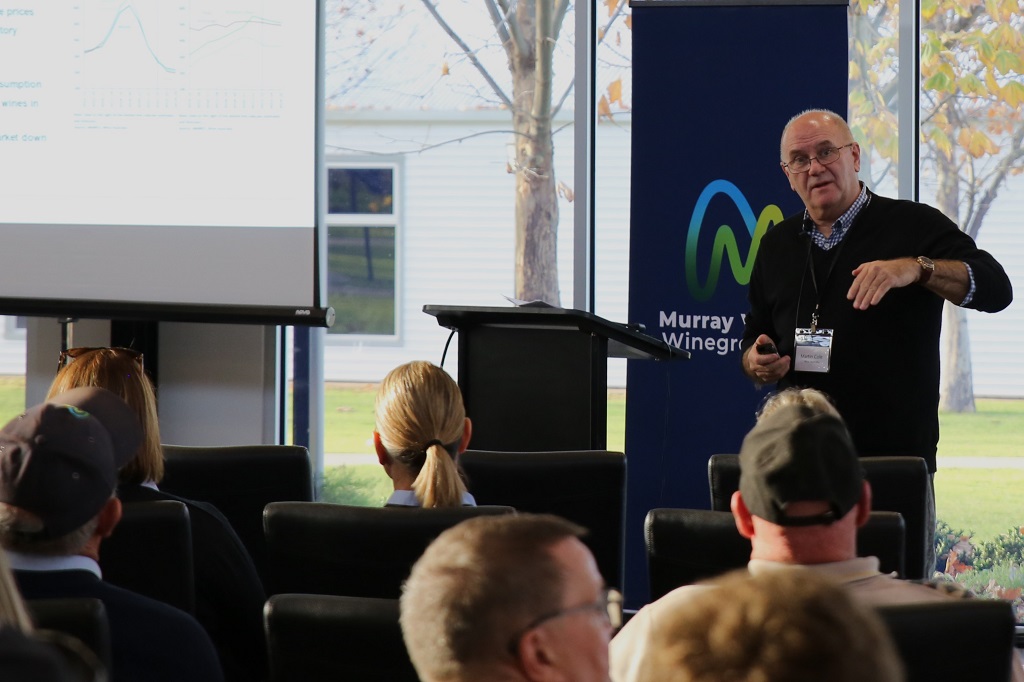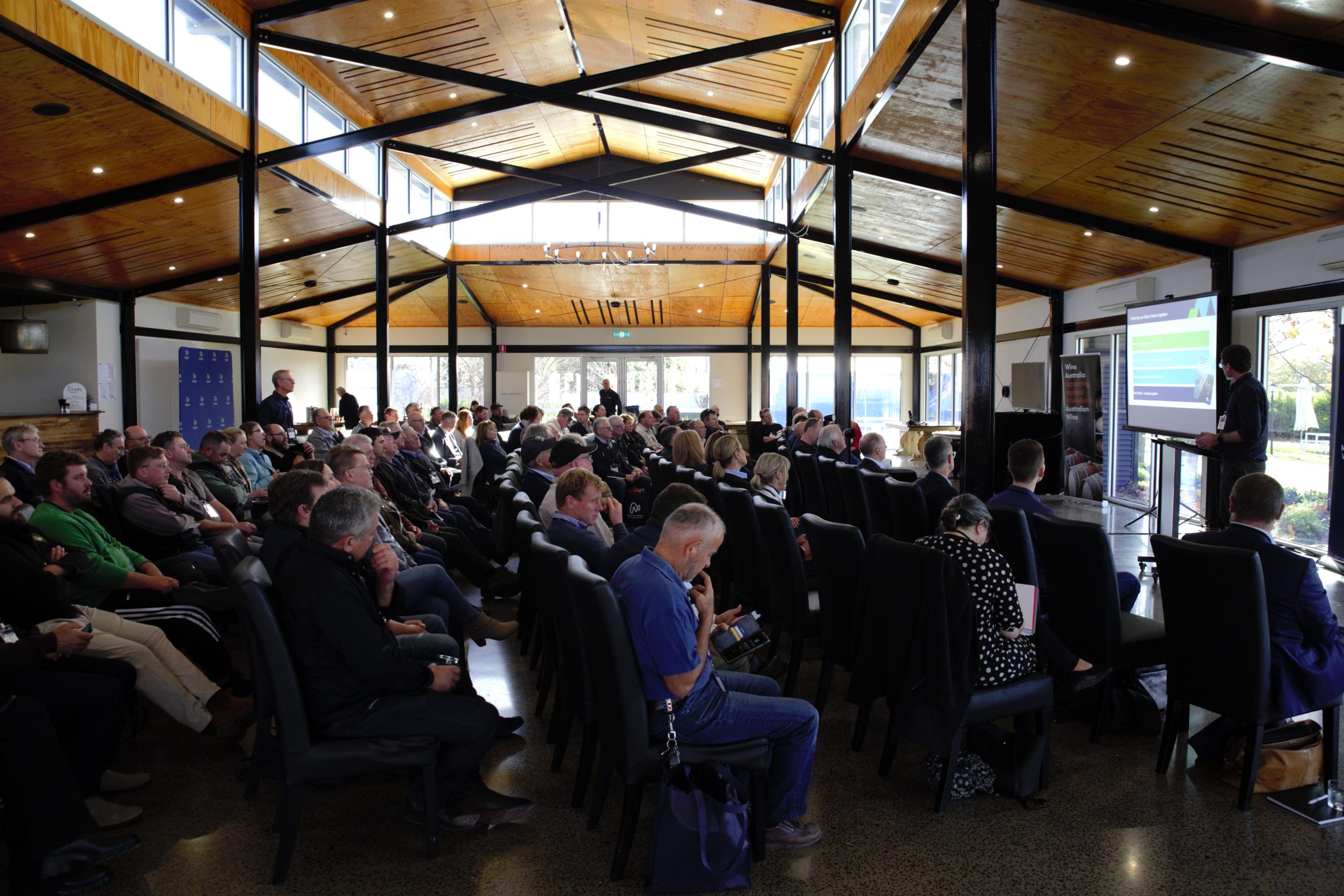Attendees at the Murray Valley Winegrowers Outlook Forum in Mildura.
by Meg Riley in Mildura
The effect of sustainable certifications on already high production costs
There was concern from the crowd at the Murray Valley Winegrowers Outlook Forum about the rising pressure from wineries for growers to become Sustainable Winegrowing Australia (SWA) certified, with questions raised around whether bulk wine production could meet these standards, and whether doing so could risk devaluing or discrediting the reputation of SWA among consumers by having the certification associated with what could be perceived as inexpensive, high-volume wines.
Held in Mildura on Wednesday, growers and members of industry gathered at the forum to hear guidance from government and industry representatives. Top of mind was navigating the current issue of oversupply, which was explored in depth from the angles of competitive pricing and contractual fairness, as well as the rising push for sustainable accreditations, diversification pursuits and marketing Australian wine on the global stage.
There was specific concern that warm irrigated regions were being left out of the conversation, yet being called upon by wineries to achieve certification, adding additional pressure to growers already working dangerously close – or in many cases below – cost of production.
Responding to these concerns, Lee McLean, CEO of Australian Grape & Wine (AGW), explained that the rise of sustainability accreditations was expected to continue.
“From where I sit, sustainability and having a sustainability credential is not going to be an optional extra that we can have in the future, it’s going to be a baseline requirement for accessing markets,” he said.
Working group focus
Providing a government perspective, the crowd heard from Adam Fennessy, the Secretary for the Department of Agriculture, Fisheries and Forestry (DAFF), who highlighted the efforts of the Viticulture and Wine Sector Working Group in addressing oversupply concerns and provided insight into the focus of the working group’s consultations and its intended outcomes.
“Many of you highlighted the need to manage production levels, and to support those wanting to exit the sector, or diversify your production and markets. We also heard about the need for better data to transition to alternative crops, to clear out plantings, prices, supply and demand,” said Fennessy. “Concerns were also raised around representation [and] contractual fairness.”
“Next steps will focus on actions to assist the industry to manage these challenges, including longer-term actions to improve the state of the sector and your long-term viability.”
A final report from this work will be provided to agriculture ministers at their meeting next month.
Fenessy identified four areas of focus that have emerged from the working group.
“Firstly, providing better data for growers to make decisions. Secondly, building demand in new markets both domestically and internationally, including that diversification of markets both in China and outside of China. Third, helping to diversify into alternative products, crops and niche markets, and four, investigating competition and regulatory issues to improve fairness in the market.”
Lee McLean acknowledged the encouraging atmosphere of the working group meetings, noting that there had appeared to be support for AGW’s $86 million pre-budget submission.
“During the wine industry and viticulture working group consultations that we had, the pre-budget submission came up in one way or another at every one of those meetings,” said McLean.”
Despite these positive indications, the wine industry was not allocated funds in the budget when it was announced in May this year.

“We got absolutely nothing out of the budget,” said Mclean.
Playing to the strengths of brand Australia
Dr Martin Cole, CEO of Wine Australia, addressed the importance of marketing Australian Wine, acknowledging the necessity of playing to the strengths of the existing national brand.

“Our budget is very small on the marketing [front], compared to somewhere like Bordeaux…so that’s always a challenge for us,” said Dr Cole.
“Just to give you an idea, Bordeaux – not France – Bordeaux, their marketing budget is like €30 million [approximately AU$48 million], just Bordeaux, not France.
“And we haven’t got that, I can assure you. So whatever we do, we have to piggyback off the national brand.”
In comparison, Dr Cole noted that Wine Australia’s marketing budget was around six million dollars.
Dr Cole was enthusiastic about the opportunity for lower alcohol pursuits in wine, referencing the success of the mid-strength beer category as an example of a successful industry-wide approach. He lamented that top CEOs in wine businesses were not more open with each other, noting that a coordinated approach to branding and messaging of the category would benefit the industry and category as a whole.
“The bottom line is this is a big opportunity. Over the next decade, this is probably a billion-dollar opportunity,” said Dr Cole.
“We know that quality has to be at the heart of that, because if you buy a mid-strength product and it’s not very good, you’re not going to get a repeat purchase.”
Ensuring fair contracts in the wine and grape industry
David Salisbury from the Australian Competition and Consumer Commission (ACCC) presented insights into the authority’s findings on competitive pricing and contractual fairness within the sector.
Salisbury noted that many of the same problems evident in the ACCC’s Wine grape market study conducted in 2019 were still persistent today.
“We found a number of issues, including potential unfair contract terms, way back then, and the lack of price transparency was something we thought was causing problems back then,” said Salisbury.
At the time, the ACCC’s recommendations included “improving quality assessment processes, improving price transparency, shortening payment times, strengthening and expanding sectors, voluntary industry, [and] improving the winemakers’ contracting practices.”
This study was followed by a review in 2021, in which Salisbury said did they could see some progress, although he added that the ACCC was unable to implement the recommended changes itself.
There is a dedicated agriculture unit at the ACCC, which Salisbury strongly encouraged growers to contact if they were concerned about the fairness of their contract terms.
Are you a Daily Wine News subscriber? If not, click here to join our mailing list. It’s free!





















